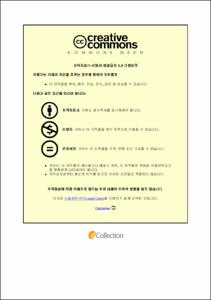ARM / 싱글 파이버 레이저를 이용한 Cu-Al 용접 특성 분석에 따른 공정 최적화 및 품질 예측 알고리즘 연구
- Abstract
- As the necessity for secondary battery development emerges due to an increase in awareness of energy saving and environment protection, the need for not only Cu similar welding but also Cu-Al dissimilar welding increases. A welding defect of battery may cause a risk such as fire, so high-quality welding should be ensured through process optimization. However, copper welding requires a high-energy-density heat source due to its high thermal conductivity and has a strong possibility of gas absorption that easily forms pores by oxidation. In addition, Cu-Al dissimilar welding has many challenges, such as embrittlement and strength degradation due to intermetallic compound and the large differences in physical properties. Therefore, this study was conducted for analyzing welding characteristics and process optimization of Cu-Al dissimilar welding. After welding using single-mode fiber and ARM laser, the appearance and cross-section of beads were analyzed, and electrical and mechanical properties were evaluated. After establishing a real-time monitoring system and acquiring an optical signal through a photodiode, the correlation between the signal and the welding result was analyzed. Finally, a prediction model that predicts the bead size and characteristics for each experimental factor and a classification model that performs quality judgment were generated using deep learning. In addition, a model was developed by identifying the characteristics of a data file imaged with a measured signal using the CNN algorithm and learning about it. The quality of the welds was judged using the developed model.
- Issued Date
- 2022
- Awarded Date
- 2022. 8
- Type
- Dissertation
- Publisher
- 부경대학교
- Affiliation
- 부경대학교 대학원
- Department
- 대학원 기계공학과
- Advisor
- 박영환
- Table Of Contents
- 제 1 장 서 론 1
1.1 연구배경 및 목적 1
1.2 연구 현황 4
1.3 연구 내용 6
제 2 장 이론적 배경 8
2.1 레이저의 원리와 종류 8
2.1.1 레이저의 원리 8
2.1.2 레이저의 종류 10
2.2 레이저 용접 공정 13
2.2.1 레이저 용접의 원리 13
2.2.2 레이저 용접 공정변수 15
2.2.3 레이저 용접 모니터링 16
2.3 알루미늄 특성 및 용접성 17
2.4 구리 특성 및 용접성 21
2.5 인공지능 23
2.5.1 인공지능 23
2.5.2 머신 러닝(machine learning) 23
2.5.3 딥 러닝(deep learning) 24
2.5.4 CNN(convolutional neural network) 27
제 3 장 고출력 싱글 파이버 레이저 용접 특성 29
3.1 서언 29
3.2 실험 장치 및 재료 30
3.2.1 실험 장치 30
3.2.2 실험 재료 34
3.3 실험 조건 36
3.4 용접 공정 최적화 38
3.4.1 용접 비드 외관 및 단면 분석 38
3.4.2 분산분석(ANOVA) 51
3.5 전기적·기계적 특성 53
3.5.1 전기전도도 53
3.5.2 인장전단 하중 55
3.6 결언 58
제 4 장 ARM 레이저 용접 특성 60
4.1 서언 60
4.2 실험 장치 및 재료 61
4.2.1 실험 장치 61
4.2.2 실험 재료 63
4.3 실험 조건 63
4.4 용접 공정 최적화 66
4.4.1 용접 비드 외관 및 단면 분석 66
4.4.2 분산분석 98
4.5 전기적·기계적 특성 파악 104
4.5.1 전기전도도 104
4.5.2 인장전단 하중 105
4.6 결언 112
제 5 장 공정변수를 이용한 예측 모델 114
5.1 회귀분석을 이용한 용접 특성 예측 모델 114
5.1.1 회귀 모델 114
5.1.1.1 싱글 파이버 레이저 회귀 모델 117
5.1.1.2 ARM 레이저 회귀 모델 129
5.1.2 회귀 모델의 통계적 유의성 141
5.2 인공지능 알고리즘을 이용한 용접 특성 예측 모델 145
5.2.1 딥 러닝 모델 145
5.2.2 딥 러닝 모델의 통계적 유의성 151
5.3 모델 예측성능 비교 152
5.4 결언 155
제 6 장 품질판단을 위한 분류 모델 개발 156
6.1 서언 156
6.2 용접 특성 예측 모델을 이용한 품질판단 모델 개발 157
6.2.1 싱글 파이버 레이저의 품질판단 기준 설정 157
6.2.2 딥 러닝을 이용한 분류 모델 개발 157
6.3 용접 모니터링 신호를 이용한 품질판단 모델 개발 162
6.3.1 용접부 모니터링 신호와 품질간의 관계(ARM laser) 162
6.3.2 용접 모니터링 신호의 품질판단 기준(ARM laser) 169
6.4 CNN을 이용한 품질판단 모델 개발 172
6.5 결언 176
제 7 장 결론 178
Reference 180
Abstract 189
- Degree
- Doctor
- Files in This Item:
-
-
Download
 싱글 파이버 레이저를 이용한 Cu-Al 용접 특성 분석에 따른 공정 최적화 및 품질 예측 알고리즘 연구.pdf
기타 데이터 / 14.69 MB / Adobe PDF
싱글 파이버 레이저를 이용한 Cu-Al 용접 특성 분석에 따른 공정 최적화 및 품질 예측 알고리즘 연구.pdf
기타 데이터 / 14.69 MB / Adobe PDF
-
Items in Repository are protected by copyright, with all rights reserved, unless otherwise indicated.